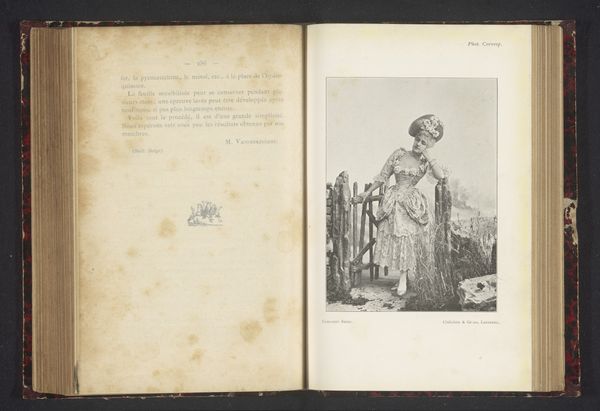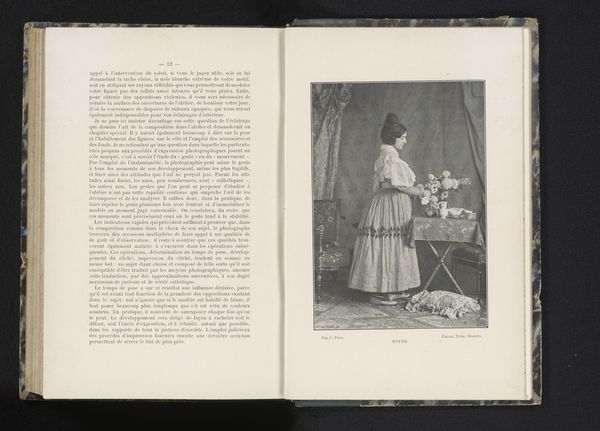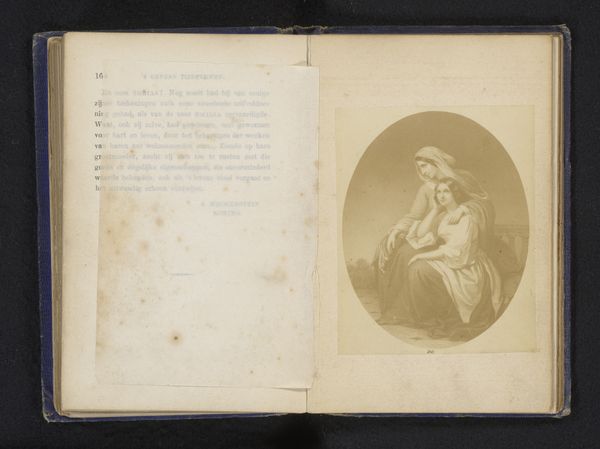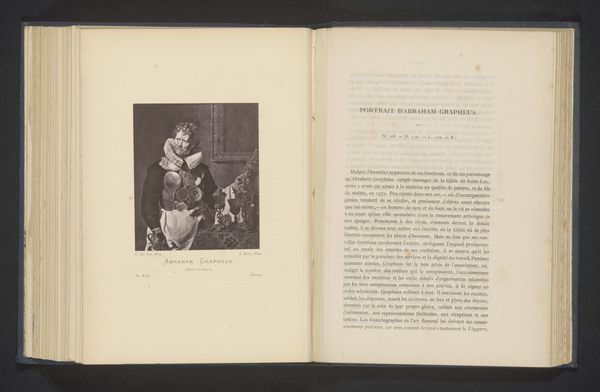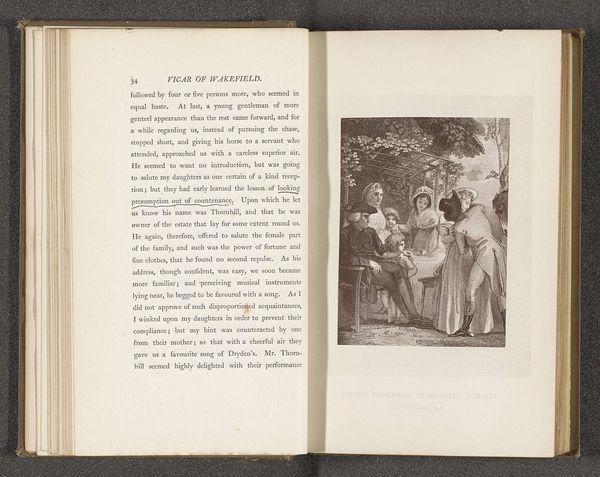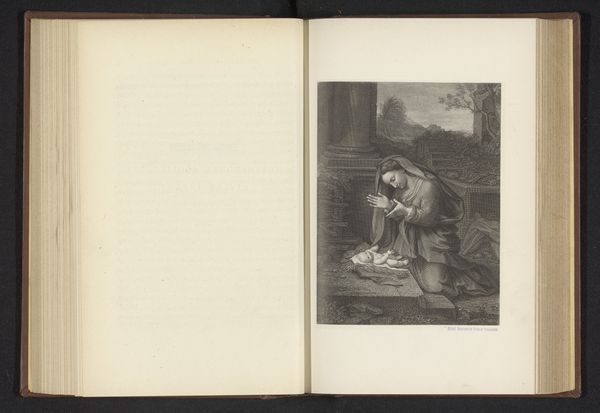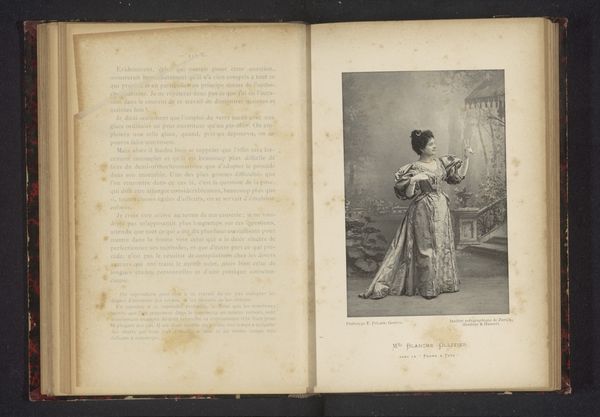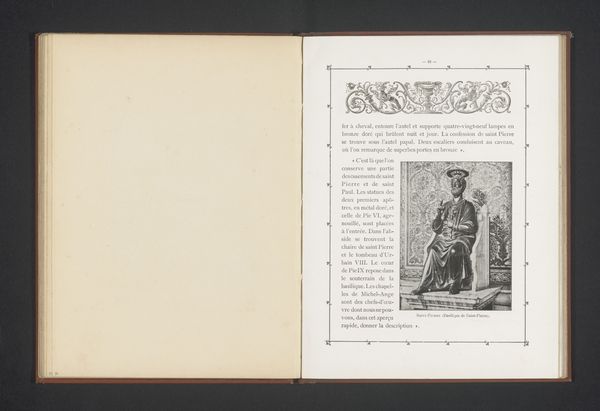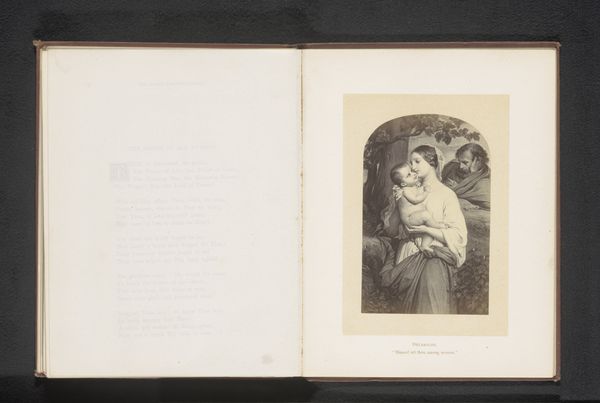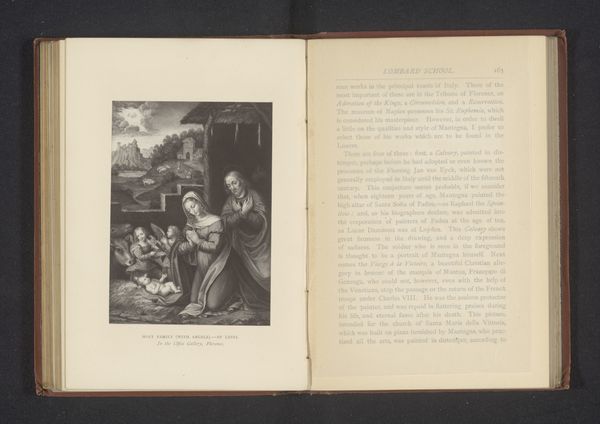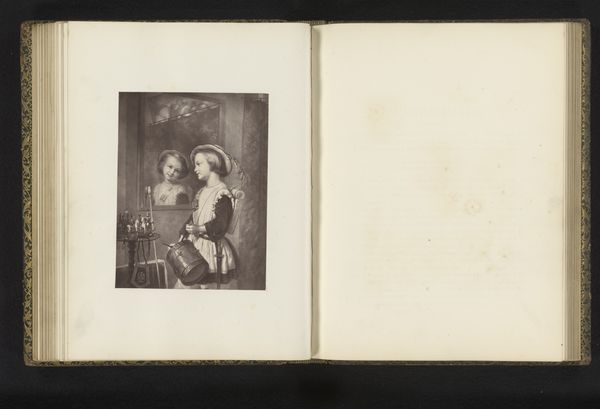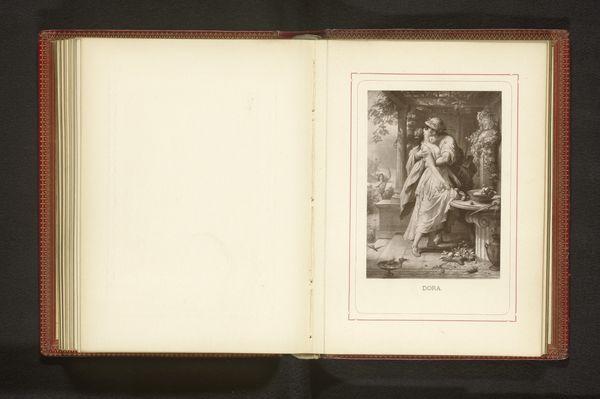
print, photography
#
portrait
# print
#
photography
#
intimism
#
symbolism
Dimensions: height 169 mm, width 108 mm
Copyright: Rijks Museum: Open Domain
Curator: Editor: Constant Puyo’s “Portrait of an Unknown Woman Playing the Guitar,” dating from before 1897. It's a photographic print, and what strikes me is the sense of quiet intimacy. The woman seems so engrossed in her music. What do you see in this piece? Curator: I see a powerful commentary on the position of women in late 19th-century society. The intimacy you perceive could be read as a visual representation of the limited spaces women were often confined to—the domestic sphere, finding solace and expression through artistic pursuits like music. Note the composition—she's positioned away from the viewer, almost hidden. Does this framing hint at societal constraints, a silencing of female voices beyond the private sphere? Editor: That’s an interesting reading. I initially saw it as celebrating the woman's creativity and independence within her own space, but now that you mention the restrictions and silence… I hadn't thought about the absence of an audience in the picture, or how that might speak to issues of agency. Curator: Exactly. The photographic techniques Puyo employed, aligning with Symbolism, are themselves crucial. He would often manipulate prints to achieve painterly effects, softening details and enhancing mood. Consider this choice; does it contribute to romanticizing or aestheticizing a reality that might have been more complex, even oppressive for women of the time? Are we implicated in this through the aesthetic experience? Editor: So it's not just about the woman in the picture, but also about Puyo's choices and how *we* are viewing the image and repeating or contesting ideas from back then? Curator: Precisely. Recognizing the photographer's perspective, biases, and historical context can give us insight into intersectional narratives concerning identity and the societal conditions in that period. How art both shapes and reflects these cultural forces. Editor: That's given me a completely new perspective. Thanks! Curator: Likewise. Thinking about these connections enriches how we relate to this piece.
Comments
No comments
Be the first to comment and join the conversation on the ultimate creative platform.
